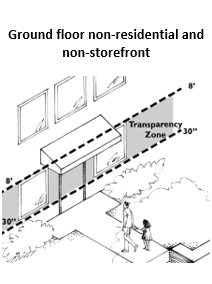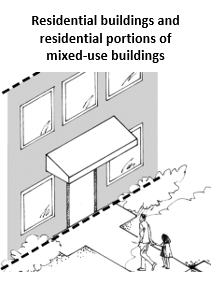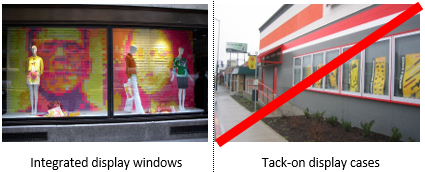19.61.050 About the transparency standards.
All block frontage designations contain distinct minimum facade transparency standards. The purposes of these standards are to maintain “eyes on the street” for safety and to create a welcoming pedestrian environment. Table 19.61.050 below includes details in how they are measured.
|
Transparency zones |
||

The transparency zone is on the ground floor between 30'' and 10' above sidewalk grade |

The transparency zone is between 30'' and 8' above grade |

All vertical surfaces of the facade are used in the calculations |
|
Other transparency provisions |
||
|
Windows must be transparent Ground level window area for storefronts and other nonresidential uses that is covered, frosted, or perforated in any manner that obscures visibility into the building must not count as transparent window area. Exception: Window signs conforming with AMC 19.67.090(E) may be counted as transparent window area, provided the areas generally around the sign are transparent. |

|
|
|
Display windows Display windows may be used for up to 50% of nonresidential transparency requirements, provided they are at least 30'' deep to allow changeable displays and the interior wall is nonstructural so it can be removed if the windows are not used for display. Tack-on display cases as shown in the far right example do not qualify as transparent window area. |

|
|
|
Other transparency provisions |
||
|
Structured parking facilities Where structured parking facilities occupy a portion of the facade, any openings simulating windows may be used to help comply with transparency requirements. |

|
|
(Ord. 3040 § 2 (Att. A), 2019)